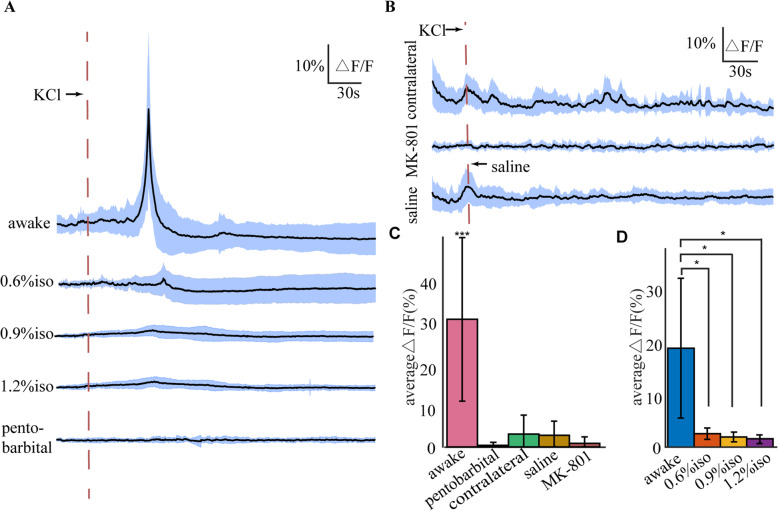Fig. 4.
Statistics of KCl-induced responses in the VPM under different conditions. A KCl application activated VGluT2 neurons in the ipsilateral VPM in awake mice (n = 50). When anaesthetized with isoflurane (0.6%, 0.9%, 1.2%, n = 10 respectively), or 50 mg/kg pentobarbital (n = 13), CSD did not significantly activate VGluT2 neurons in the VPM. Data are presented as means ± SD. B KCl application did not activate VGluT2 neurons in contralateral VPM (n = 15), or when the cortex was topical affected by NMDA receptor antagonist MK-801 (n = 8). When saline was applied ipsilaterally instead of KCl (n = 16), there was no significant activation. Data are presented as means ± SD. C The maximum average relative fluorescence change under different conditions. Data are presented as means ± SD. ***P<0.001 based on ANOVA between stimulated state and resting state in each case. D The maximum average relative fluorescence changes of 10 experimental mice under isoflurane anesthetized or awake state. Data are presented as means ± SD. *P<0.05 based on repeated measures ANOVA between awake state and 3 different levels of isoflurane anesthetized state. When anaesthetized with isoflurane, the activation of VGluT2 neurons in the VPM by CSD application was significantly decreased (P<0.05)

